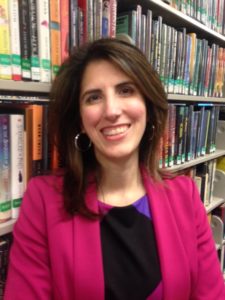Organize (or´gə-nīz´): To reduce to a system;automatize. To make independent.
I am Marie Kondo’s first failure.
Less than six months after reading last year’s hot organizing book, The Life-Changing Magic of Tidying Up, I had to forcibly stuff my flannel pj’s into their drawer today. Gulp. Books, once pine-scented and tied with ribbons at the holidays, now refuse to join older tomes on my bookshelf. “You will not forget us!” their covers cry out from under my mug. Crinkled papers rent a box next to my file cabinet waiting…and waiting to move into their permanent home. I never even made it to the miscellany and photo categories.
I know a lot of people for whom Ms. Kondo’s methods were radical, revolutionary and rewarding. I am not one of them.
When my children were younger, I taught them how to brush their teeth. I supervised every step of the process from the application of pea-sized toothpaste globs to rinsing the sink afterwards. Over the years, their twice-daily brushing routine became automatic and no longer needed my involvement. The only time I hear about it now is when they yell down “Mom, we’re out of toothpaste.”
I want my things to do the same thing. Grow up and be independent. Automatize themselves. Do it once and forget it. OHIO (Only Handle It Once).
If you’re like me, and don’t have time to fold laundry the Kondo way, here are some alternative reads for 2018.
1) New Order: A Decluttering Handbook for Creative Folks (And Everyone Else) by Fay Wolf
I give this author kudos for delving into an area of organization that too many authors skip. Digital data, including texts and emails, take up much of our lives. My favorite tip for writers: go on vacation! Whenever you’re on a deadline, utilize the out-of-office automated response feature of your email. It’s not just for vacations. You can change it to say whatever you want, but specify when you’ll be checking email again. People will know not to expect an immediate response and you can focus on your writing.
Visually appealing graphics and short sections of text let me breeze through this book in about an hour. No visits to the organizing store required. Thanks to the author, I re-labeled my files using post-it notes turned upside down.
2) Unf*ck your Habitat: You’re Better than your Mess by Rachel Hoffman
Alright, this book is just f*cking hilarious to read even if you don’t end up using any of the organizational tips. I love the author’s writing style (“Housework sucks!”) and disdain of complicated decluttering books. This book is quickly gaining a following among self-confessed Kondo dropouts like me. Hoffman provides genius ways to automate tasks into your already daily routine. One example: pour cleaner into the toilet bowl right before you brush your teeth every night.
Reading online reviews, I was struck by the number of people with physical or mental challenges who experienced positive, lasting changes because of this book. These populations are left out of traditional tidying books. One of Hoffman’s main tenets is to limit cleaning or organizing sessions to 20 minutes, always followed by a ten minute break. She calls it the 20/10 rule. We all can do anything for 20 minutes. Right? This might be a method worth trying out in our writing, too.
3) Messy: The Power of Disorder to Transform Our Lives by Tim Harford
If you’re looking for the exact opposite of minimalism, than this is the book for you. You’ll feel better about your surroundings no matter what their degree of disorderliness. The author’s thesis is simple: too much organization stems creativity. We need to shake things up, arrange items randomly, get distracted, and then change it up again. All of this leads to increased serendipity and creative output.
You’ll certainly get some practical tips, but the author focuses on real-life creatives who used mess to their advantage. His examples range from musicians changing instruments that yielded landmark recordings to Harvard writing students. Spoiler: The most distracted students were the ones that completed a novel by the end of freshman year.
Final Suggestions
If none of these titles appeal to you, check out the glut of new books inspired by balanced Scandinavia including:
- Lagom: The Swedish Art of Balanced Living by Linnea Dunne
- Lagom: Not Too Little, Not Too Much by Niki Brantmark
- The Little Book of Hygge: Danish Secrets to Happy Living by Meid Wiking
- The Little Book of Lykke: Secrets of the World’s Happiest People by Meik Wiking
- The Gentle Art of Swedish Death Cleaning: How to Free Yourself and Your Family from a Lifetime of Clutter by Margareta Magnusson
System or no system. Minimalist, messy, or somewhere in between. One of these books will surely speak to you and get your things, like children, to grow up and require less attention. And if nothing works then, as we always say at DIYMFA.com, honor YOUR reality!
 Terri Frank is a professional librarian and holds a Master’s degree in library and information science from the University of Michigan. When she’s not working in a library, she’s probably visiting a library with her husband and two kids. Her current writing projects include a novel about a tuberculosis sanitorium.
Terri Frank is a professional librarian and holds a Master’s degree in library and information science from the University of Michigan. When she’s not working in a library, she’s probably visiting a library with her husband and two kids. Her current writing projects include a novel about a tuberculosis sanitorium.







